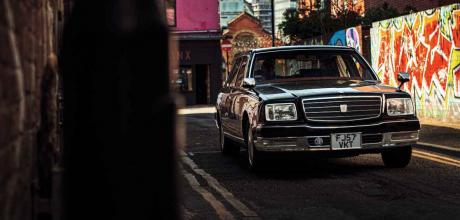2007 Toyota Century V12
Built for Japan’s ultra-conservative ultra-wealthy, this demure limo hides a V12 torch under its bushel. Glen Waddington explores the exotic culture of the Toyota Century.
Photography David Roscoe-Rutter
TOYOTA CENTURY
World's most subtle V12-powered limo
Not for show offs
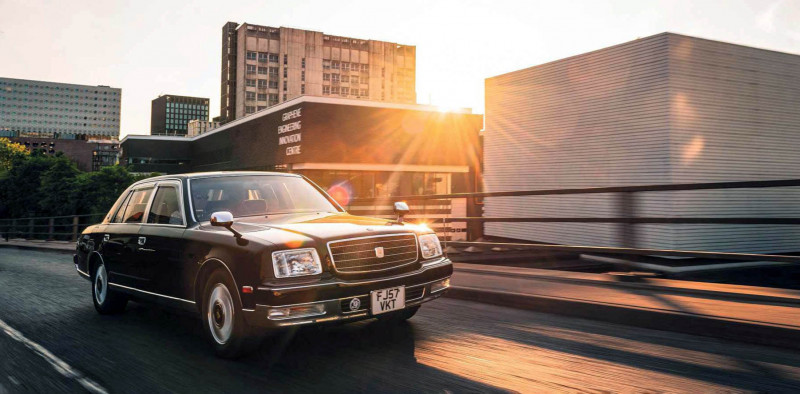
Glen Waddington? Of DriveTodayportal?’ I hear this as I’m about to leave the ‘boss’s seat’ in the back of the Toyota Century. We’ve pulled up outside one of Manchester’s premier hotels, and the concierge is making his way across the dark and shiny marbled forecourt. Perhaps he’d spotted the flagstaff on the front bumper (though we weren’t sporting a pennant at the time), or maybe it was the regal bearing of this long yet simple-looking car. But then he frowns and suddenly it doesn’t look anymore as though he’s about to open my rear nearside passenger door. No, it turns out he’s not happy with where we’ve parked. Then I make out the immortal words: ‘Never heard of him.’ Whatever.
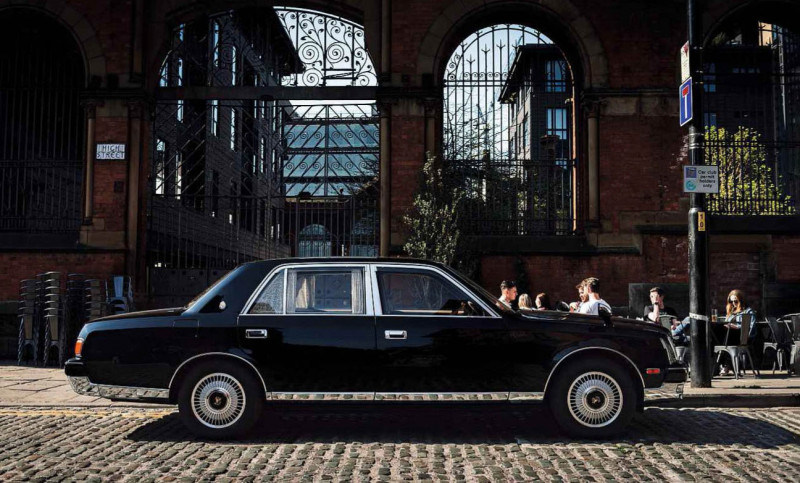
The point is that he was anticipating the emergence of a VIP, no matter what the faux pas involving where the car had stopped. You’d expect someone of significance to step from it, not a motoring hack (who’d more likely want to be behind the wheel anyway). And he was certainly confused by its identity: ‘A Toyota? Never!’
THERE’S BARELY MORE THAN A MURMUR FROM WHAT’S UNDER THE BONNET. WHICH IS THE ONLY V12 EVER MASS-MANUFACTURED IN JAPAN
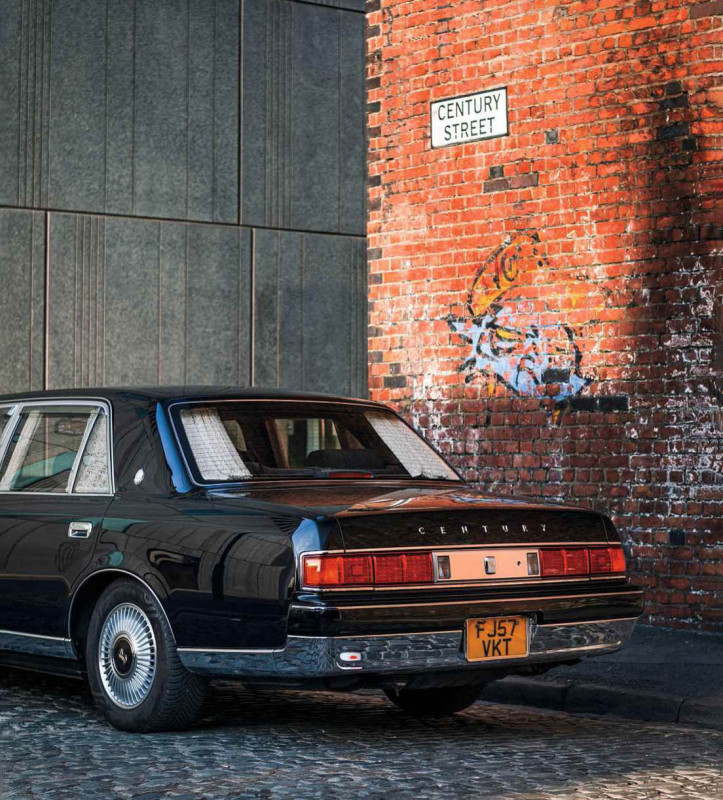
Not simply a Toyota, though, but a Toyota Century, the working car of Japan’s emperor, and the choice of wheels among Japanese captains of industry who prefer to be driven. As the company itself suggests: ‘The Century is acquired through persistent work, the kind that is done in a plain but formal suit.’ This is Japan’s ultimate mobile status symbol, yet it is not one that shouts. You’ll notice that there are no blacked-out windows, which would clamour to be noticed. Those in the back seats of a Century are happy to be seen in a car that does its best to melt into the background, one that provides silence, comf ort and swift progress without announcing its intention to do so. And if those occupants crave privacy, there are lace cur tains to draw. Yes, really. Today, in a city centre where even the L amborghini Urus has become a relatively common sight, there is only one Century. And it arouses curiosity, rather than dem anding attention.
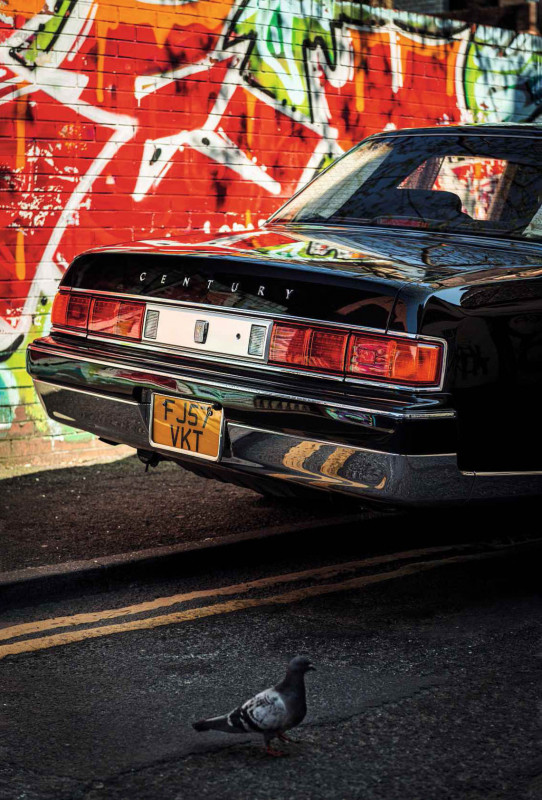
THE CENTURY IS A DELIBERATE REJECTION OF THE EXCESS THAT ACCOMPANIES SO MANY LUXURY CARS’
So we make progress around the streets without going unnoticed, and eyes turn when we stop, yet the observation is polite and distant. Respectful. Deferential, even. Seems the etiquette of the nation that created the Century is conferred by its very presence. And there’s something rather gratifying ab out its self-effacing nature.
The atmosphere within is serene. None of the appointments is suggestive of one-upmanship, though the equipment level is high: everything that moves does so electrically, there is air conditioning, a DVD player for rear passengers. And surely this second generation of Century, built as recently as 2017, was the last car with a factory-fitted cassette player.
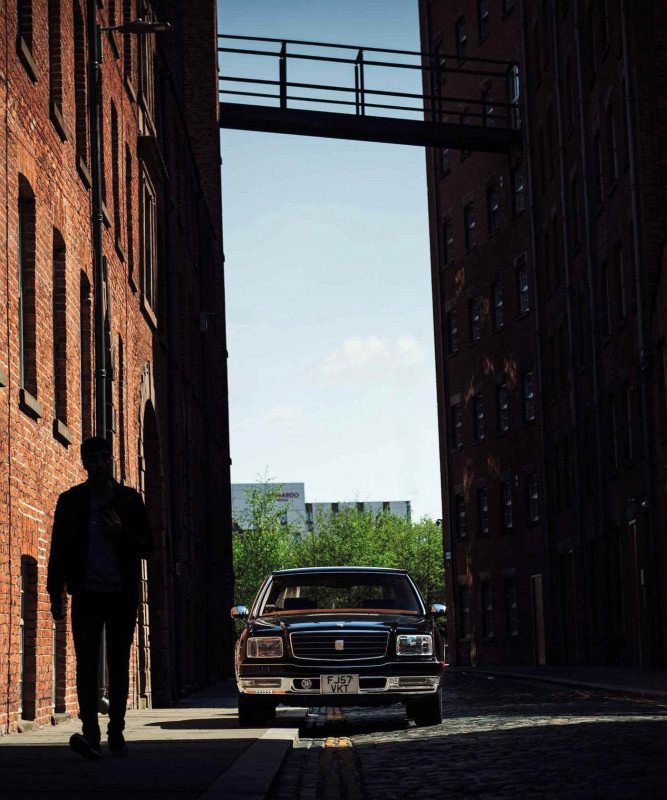
The seats are upholstered in a velvet-like wool that Toyota calls Ruikyo, which is cool in Summer, warm in Winter, and makes no noise as your body moves against it — unlike leather, which tends to be the hard-wearing, easy-clean choice of the carriage trade, rather than private buyers. Only 10% of the latter ever get behind their own wheel.
There are single-grain rosewood panels across the dash, along the central console and filleted into the doors and seatbacks, each of which is hand-cut and hand-sanded, having been contracted out to Yamaha — not thanks to the luxurious appointments of your typical FZR1000 but because it is Japans premier maker of grand pianos. A lot of lacquering goes on there; it’s an ancient art in Japan, and we’ll come back to it.
Yet there is a lot of plastic, too, dash mouldings with a lavalike surface that was equally common among Toyota’s more humble offerings. Likewise the switchgear: sure, there’s a prescient (if unfathomable) touchscreen, yet the column stalks could have come from a Camry. And probably did.
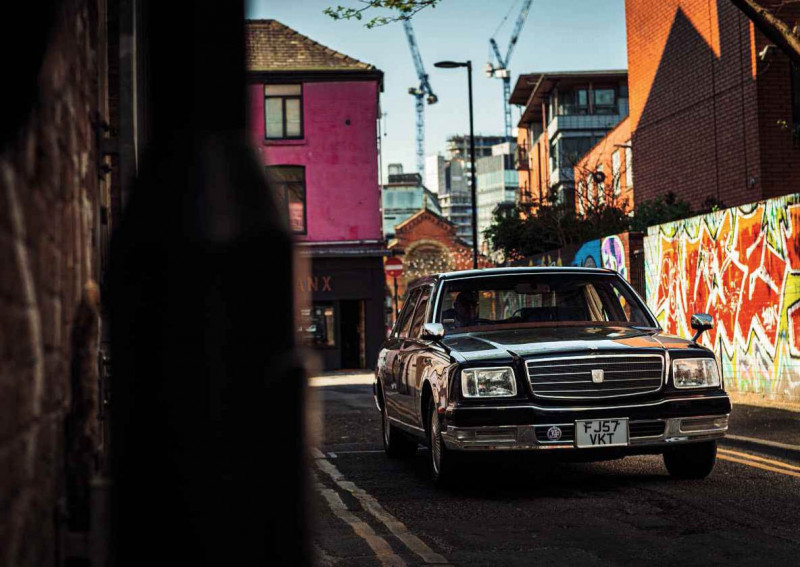
There is a Japanese proverb that goes: ‘The nail that sticks out gets hammered down.’ Conformity rules. So even though the Century carries royalty, heads of state, the wealthiest of industrialists, it relies on its deeply conservative appearance for its appeal. It doesn’t so much project an image as reflect one.
Which gets us on to mirrors. Pop open the door and it’s so easy to step out, as the opening is wide and the sill and wool- carpeted floor are flush, so no ceremonial kimonos can get caught (works well for those who are suited and booted, too). Then I’d catch sight of myself in the C-pillar, and learn of its significance for a variety of reasons.
Imagine you’re a dignitary, on your way to making an important public announcement. Your driver will open the door, allow the soft-close mechanism to click it shut behind you (no slam to shatter your nerves or bring unwanted attention). Your final opportunity to check your tie, your hair, whether you caught yourself shaving, whether you applied your lipstick correctly; your last chance to see yourself before you face the public is in the Century’s C-pillar.
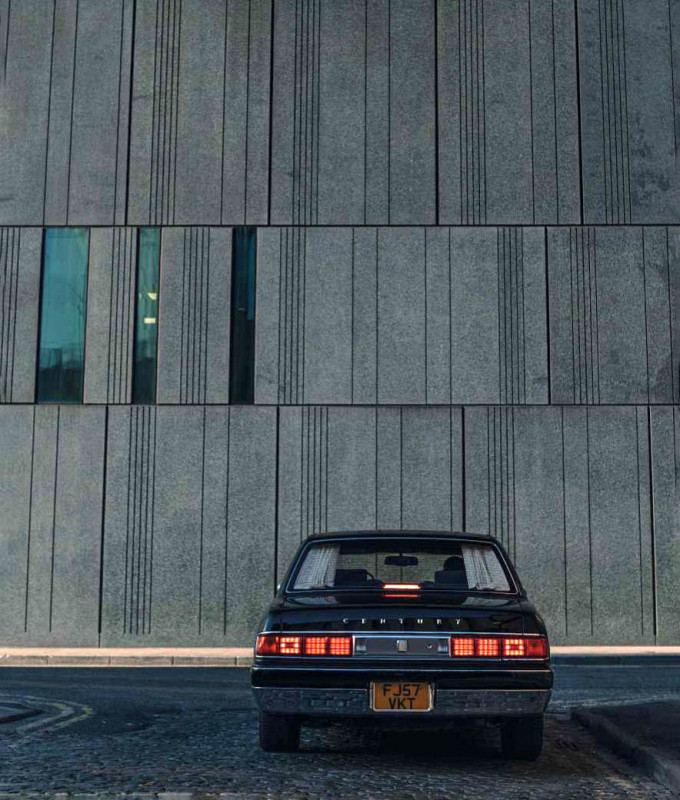
And beyond that mere practicality comes the symbolism. The mirror is one of Shintoism’s three sacred treasures, representing wisdom. Now consider Japan’s 7000-year tradition of lacquering. It’s not evident only among the woodworkers of Yamaha but also within the special Century workshops at the Higashi-Fuji plant, in Shizuoka, around 130 miles from Toyota’s Nagoya headquarters. Century production was carried out there from the launch of the first generation in 1967 until 2020, and never employed more than seven robots even at the height of its automation with the latest car, from 2017. The rest is finished by hand, has been for all three generations.
‘IN A CITY WHERE EVEN THE LAMBORGHINI URUS HAS BECOME A COMMON SIGHT, THERE IS ONLY ONE CENTURY’
One such artisan is in his 60s and has been working on the Century since the first generation. He has trained two others, now in their 40s, and they are searching for another candidate yet. The tools these three sculptors use to tweak the Century’s body pressings are each custom-made for their own hands. The doors are hung by hand, and great care is taken over the subtle ‘dignity line’ that arcs without deviation along the Century’s shoulder. Only then is the paint applied, and wet-sanded between the multiple coats before being hand-polished to a final mirror finish. Four master craftsmen are responsible for it.
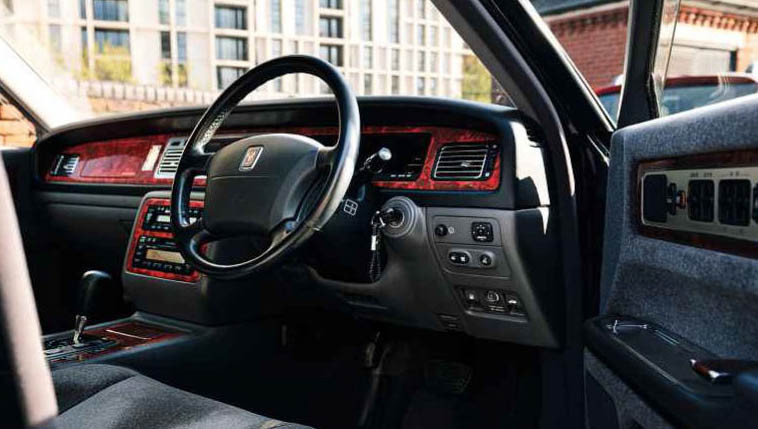
Every single aspect of each car’s assembly is documented in The Century History Book. Each Century has its own book, and Toyota saves every one of them in perpetuity. It can be accessed via the touchscreen in the dashboard, where it acts as the service history, or you can visit the factory and ask to see it.
As for the angle of that C-pillar, it was dictated by the view of Mount Fuji from the factory, as was the angle of the windscreen pillar. Other symbolic cues abound, not least the cod-heraldic ‘C’ for Century, in a font cut for the original generation and which hasn’t changed since, most prominent on those shiny C-pillars. And the gold phoenix logo is used throughout — on the grille, wheels, steering wheel. Inspired by the hou-ou bird from Sinospheric mythology, it represents the Imperial House of Japan. The image can be found throughout Asia, including the Kinkaku-ji Zen Buddhist temple in Kyoto. Cutting the die for the hou-ou badge is a 45-hour job. By hand, of course.
It’s a very different set of visual cues than you’d expect from, say, a Rolls or Bentley saloon, even a Mercedes-Benz S-Class or BMW 7-series — though, tellingly, Toyota claims that the Century wasn’t created with a rival in mind, and its purpose was more in line with that of the Rolls Phantom V and Daimler DS420. And what unifies all these cars is refinement. Road surface bumps are notably absent, as is any type of indentifiable noise. Just a background swish at town speeds; barely more than an emollient murmur from what’s under the bonnet. Which is a V12, the only V12 ever mass-manufactured in Japan.
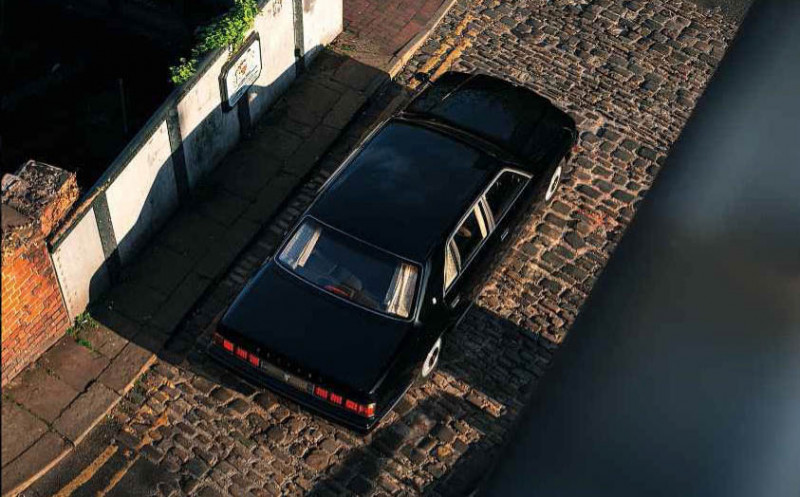
But talk of oily bits is for later, when I’m in the front seat. For now, it’s a chance to recline (electrically) and take advantage of the ottoman function, which allows a section of the front passenger seat backrest to drop back, creating a long and comfortable footrest. It’s a solution to the fact that the Century is surprisingly tight in the back; this generation dates back to 1997, and it wasn’t designed with export in mind, so the longer limbs and portly behinds of European and American business types were ignored. No such luck in the adjacent spot, though they get a pop-up desk. Let’s call that the PA’s seat. Like mine, though, it can be heated or ventilated. Cosy.
To save me from dropping off altogether, let’s consider some history. The first Century arrived in 1967, to celebrate the centenary of the birth of company founder Sakichi Toyoda. It was based on the 1964 Toyota Crown Eight, with a 3.0-litre version of the Crown’s 2.6 V8, and remained in production for 30 years, evolving slowly (from G20 to G30 and G40) via longer-wheelbase versions and an engine that grew to 4.0 litres.
The success of that original edition coincided with the growth in Japan’s economy, its annual sales doubling between 1985 and 1989. The second generation arrived in 1997, when Japan was in the midst of a recession so devastating that the era became known as ‘the lost decade’. It was not really a time for developing an over-engineered, limited-production luxury car with its own bespoke V12 engine. But such was the respect in Japanese society for the ageing original that Toyota pressed on. And the G50 was produced for 20 years, with 9573 leaving Higashi-Fuji. The current G60 arrived in 2017, based on the Lexus LS600h, complete with a V8 hybrid powertrain.
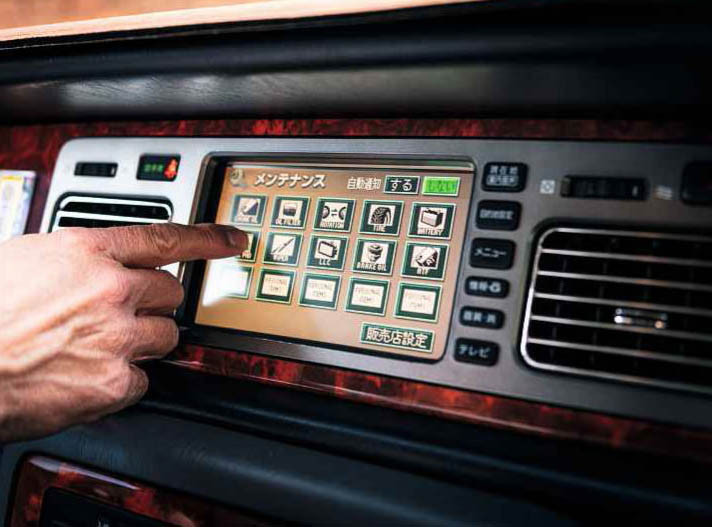
‘Our’ G50 is a mid-term model, of the type produced from 2005 to 2010, mainly changed only in tiny detail (LED rear light clusters, for instance) from the previous series, though it also marked the move from a four-speed to a six-speed automatic transmission. Even in its styling it’s recognisably similar to the 1967 original.
Ever heard of the Toyota Celsior? Outside Japan it was known as the Lexus LS400, a car engineered for perfect reliability and refinement, a car worthy of a marque beyond the scope of Toyota: there couldn’t have been a better basis for an all-new luxury brand, and it landed in Europe and the US in 1989. The second generation (looking scarcely different from the first) provided some of the underpinnings and steering and suspension hardware for the G50, which was sold only in specific Toyota Store locations. Lexus finally became available in Japan from 2006, always pitched a rung below the Century.
But what you want to hear about is that engine. It’s a 60" V12 with a reinforced aluminium block, two camshafts per bank, 48 valves, and fuel injection controlled by two ECUs: if one bank of cylinders failed, you could get home on the other. There is variable valve timing, iridium spark plugs are fitted, and the cylinder heads are designed with slant-squish combustion chambers. The forged steel, fully counterweighted crankshaft is held in place by six-bolt main bearings.
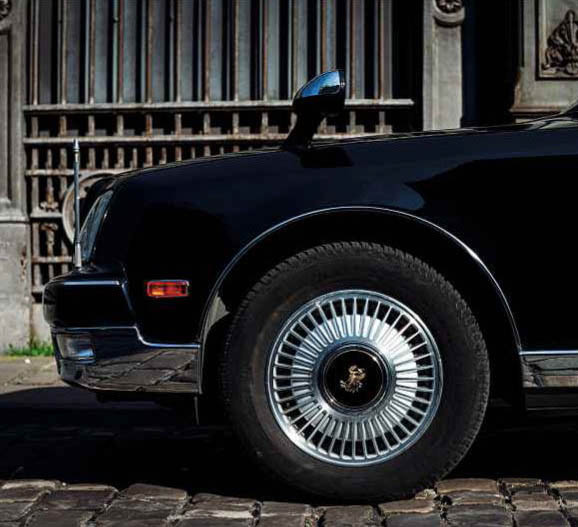
It’s extremely understressed, with an official 276bhp power output dictated by Japan’s gentlemen’s agreement, which sought to keep a lid on spiralling performance figures, though it’s reckoned to pump out more like 330bhp. Torque peaks at 4000rpm, with 355lb ft, though more than 80% of that is available from just 1200rpm — exactly what you want in a luxury limo. It seems quite incredible that so few of these engines were made, and that the Century was their only recipient.
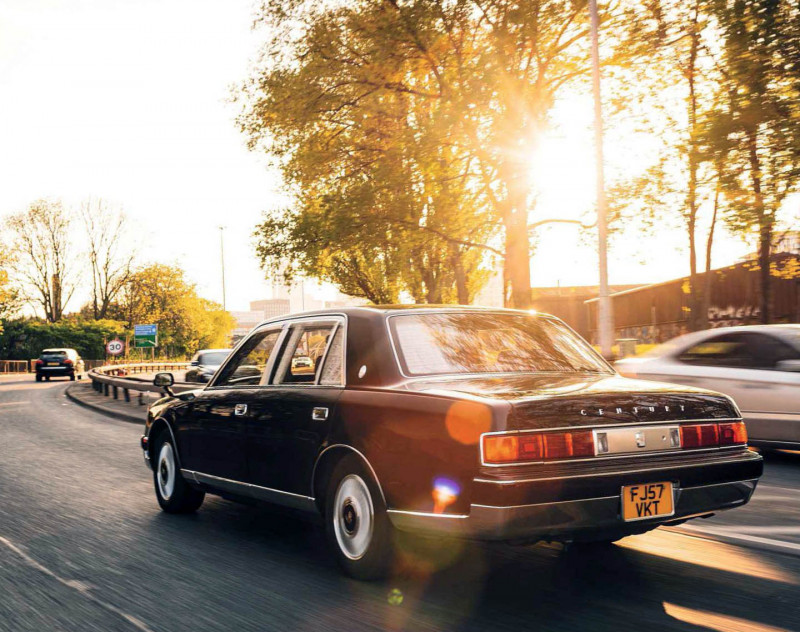
Time to take the wheel. There’s a torpid response from the transmission, perfect for keeping things smooth for those in the rear seats, but when you’re battling traffic and heading out onto A-roads, best to select ‘S’ mode. Usually it stands for ‘Sport’ and that doesn’t seem appropriate here, but it certainly perks up the response and suddenly you realise that having a largish V12 ahead of you means there’s more than merely impeccable refinement on tap. The digital rev-counter is laughably lax in its response, failing to keep up with burgeoning acceleration that feels seamless, elastic — and towering. And despite deliberately gunning it, you still won’t hear much from the V12. You won’t feel anything from it either. This car swings an extremely large stick very calmly indeed.
The driver’s seat is sprung like that of a truck but it’s pretty mean in its dimensions and feels rather flat, so you cling to the steering wheel when the road climbs out of the city. The air springs are evidently aimed at flattening bumps, something that the standard (and specific) 16in balloon-profile Bridgestone Regno tyres are complicit in.
Yet, although you’ll feel as though you’re swinging around a bit, the Century is by no means a disaster in the curves. The steering is light but linear in response and always positive, and you can treat the accelerator as a torque-apportioning device: only when you need to stop suddenly do you need to step on the brakes. You can even invite the transmission to hold on to each ratio. That this car is exemplary in town and on motorways would be a given; that it can entertain beyond them is a surprise. And never does it become unseemly or uncouth.
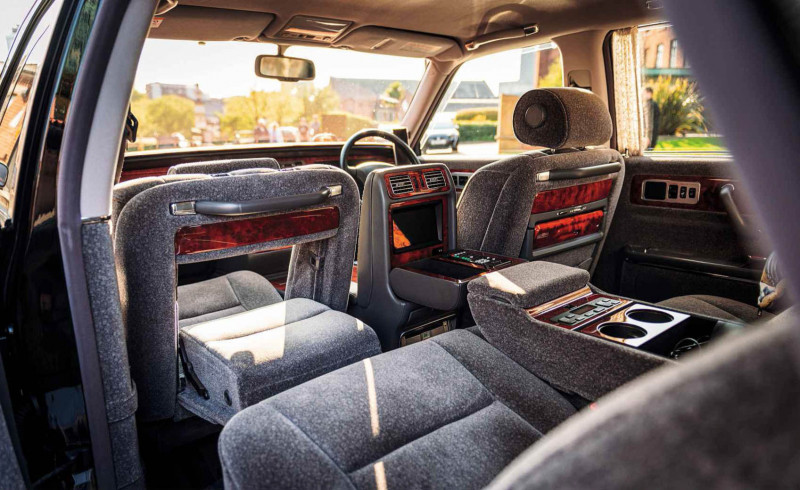
The Century is a deliberate rejection of the excess that accompanies so many luxury cars, yet offers an ease and lack of imposition that really ought to define the market. Which it has done only in Japan. A run of 100 left-hand-drive G50s was built for export and only 27 sold; one remains in service with the Japanese Ambassador to France.
But the Japanese market doesn’t support older, expensive cars, which is why there is now a thriving import trade. This 2007 Century belongs to Warren Christie; after a two-year search, he located it at a specialist dealer near Fukuoka on the island of Kyushu. When it arrived on UK shores four years ago it owed him ten grand. For insurance purposes today, it is valued at £12,000. That’s a hell of a car for the money. For comparison’s sake, the current model costs around £180,000 new.
Not only that, when Warren needs spares, so long as he knows the part codes they can be had quickly and inexpensively from his local Toyota dealer. Not that it happens often. One such was the soft close mechanism on the ‘boss’s door’, not uncommon as it’s the one most often used: it was an easy DIY fit. A quick look at the odometer shows nearly 200,000km yet this car feels tight as new.
But those values might soon change. The earliest Century V12s are now eligible for export to the USA under the 25-year rule. Collectors are already interested and will be keen to buy — and show off. Just don’t expect to notice.
Clockwise, from above Century blends in with city traffic; its size is more obvious when seen from above; you'll need to learn Japanese if you want to use the touchscreen; wheels feature the hou-ou symbol.
Left and right LED tail-lights mark this car out as a mid-series model; highlights of remarkable rear quarters include the ‘ottoman’ feature, plus DVD player and writing desk.
Clockwise, from right Few owners tend to sit here; simple styling and conservative proportion, yet still people look; V12 is all about refinement, pulls hard and unobtrusively; in its element at a cruise.
TECHNICAL DATA 2007 Toyota Century V12
- Engine 4999cc V12, DOHC per bank, 48-valve, variable cam timing, electronic fuel injection and engine management
- Max Power 276bhp @ 5200rpm
- Max Torque 355lb ft @ 4000rpm
- Transmission Six-speed automatic, rear-wheel drive
- Steering Rack and pinion, power-assisted
- Suspension Front and rear: double wishbones, air springs rakes
- Vented discs, ABS
- Weight 1990kg
- Top speed 112mph (180km/h, electronically limited)


